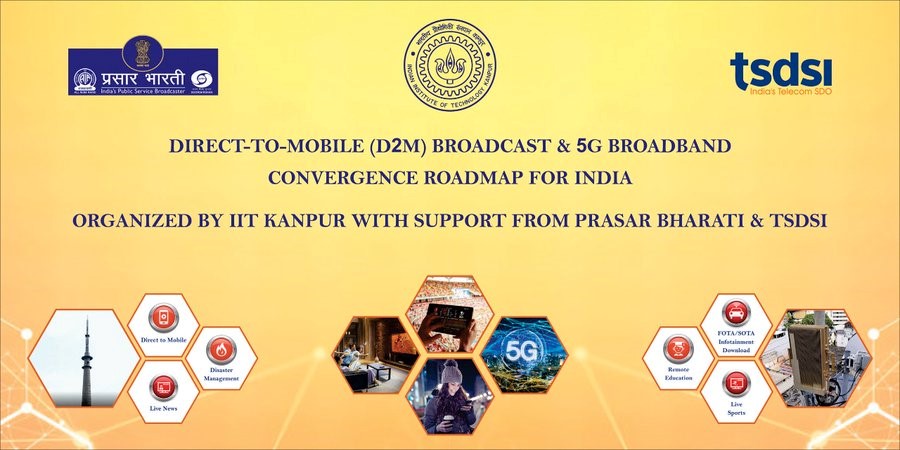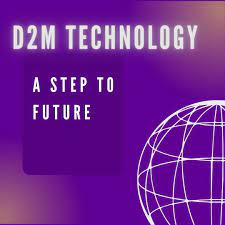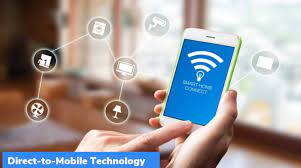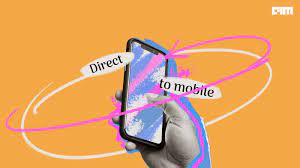Breification 28: How D2M India's indigenous technology Revolutionizing Mobile Content Delivery
What's D2M Technology
In an age where mobile phones have become an integral part of our lives, innovations in technology continue to reshape the way we access and consume content. One such groundbreaking advancement is the D2M (Direct-to-Mobile) technology, a game-changer that enables the broadcast of video and multimedia content directly to mobile phones, even in the absence of an active internet connection.
This technology, based on the convergence of broadband and broadcast, has the potential to transform how we experience entertainment, information, and communication on our mobile devices.
Unveiling D2M Technology: A New Era of Content Delivery
The emergence of D2M technology represents a significant leap forward in content delivery. Traditionally, mobile devices relied on internet connectivity to access and stream video content. While this model has been effective in many cases, it's not without limitations. Users in areas with weak or no internet signals often face frustrating interruptions, buffering issues, and slow loading times.
Moreover, the dependence on internet connectivity can pose challenges during events that strain network capacities, such as large gatherings or natural disasters.
D2M technology takes a novel approach by leveraging the power of terrestrial digital TV broadcasting to directly transmit multimedia content to mobile devices. This means that users can enjoy video streams, news updates, live events, and other forms of entertainment without requiring an active internet connection.
This innovation has the potential to bridge the digital divide, ensuring that individuals in remote or underserved areas can access content without the constraints of internet availability.

How is it helpful?
The government is getting behind the technology big time because it can be used to send citizen-centric information directly, even to those who do not have access to the internet.
The cable and DTH sectors will be hugely impacted if the tech takes off. This is because it will entail broadcasting coming directly to the consumers’ homes without the need for an intermediary, and this will be a very big change, according to Ministry of Information and Broadcasting (MIB) Secretary Apurva Chandra.
The Convergence of Broadband and Broadcast

At the heart of D2M technology is the convergence of broadband and broadcast systems. Broadband connections, which have become ubiquitous in many urban areas, offer high-speed data transmission for a range of online activities. On the other hand, broadcast systems have long been used for over-the-air television signals, reaching a wide audience simultaneously. By integrating these two technologies, D2M creates a seamless way to distribute content to mobile devices on a massive scale.
D2M technology taps into existing digital TV broadcasting infrastructure to transmit content to compatible mobile phones equipped with the necessary receivers. This approach not only optimizes bandwidth usage but also ensures efficient distribution without relying solely on internet networks. This could prove invaluable in situations where internet connectivity is scarce, unreliable, or compromised.
Empowering Mobile Phones with Terrestrial Digital TV

A key advantage of D2M technology is its ability to enable mobile phones to receive terrestrial digital TV signals. Terrestrial digital TV, also known as over-the-air television, delivers high-quality content to television sets through radio waves. D2M extends this capability to mobile devices, offering users access to a diverse range of content directly on their phones.
Whether it's streaming live sports events, news updates, educational programs, or entertainment shows, D2M technology opens up new possibilities for mobile content consumption.
What are the uses of D2M technology?
- This technology can be used to directly broadcast content related to citizen-centric information.
- It will help in countering fake news, issuing emergency alerts as well as offering assistance in disaster management.
Furthermore, D2M technology can enhance emergency broadcasting and public communication efforts. In times of crisis or during natural disasters, when internet connectivity might be disrupted, D2M-enabled phones can receive critical updates and information via terrestrial digital TV signals. This can aid in disseminating important instructions, warnings, and safety guidelines to the public, ensuring a more informed and prepared population.
Challenges and Future Prospects

While D2M technology presents numerous advantages, it's important to acknowledge the challenges it might face during implementation. Adapting existing digital TV infrastructure to support D2M capabilities will require investment and coordination among broadcasters, mobile manufacturers, and regulatory bodies. Additionally, ensuring compatibility across various devices and optimizing the user experience will be crucial for the widespread adoption of this technology.
Looking ahead, the future prospects for D2M technology appear promising. As more regions adopt digital broadcasting standards, the infrastructure to support D2M will expand, offering a broader reach and potential for growth. The technology could also lead to innovative business models, such as specialized content subscriptions, interactive features, and targeted advertising for D2M-enabled devices.
Conclusion
The introduction of D2M technology marks a significant step forward in the evolution of mobile content delivery. By merging the strengths of broadband and broadcast systems, D2M offers a solution to the challenges of internet-dependent content consumption. Enabling mobile phones to receive terrestrial digital TV signals not only enhances entertainment experiences but also empowers users with access to vital information during critical times.
As this technology continues to evolve and gain traction, it has the potential to reshape the way we think about connectivity, content distribution, and the role of mobile devices in our lives.






